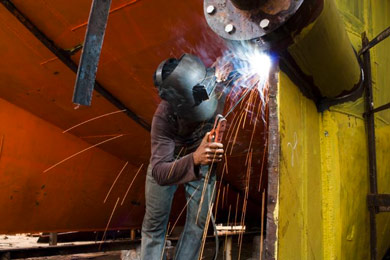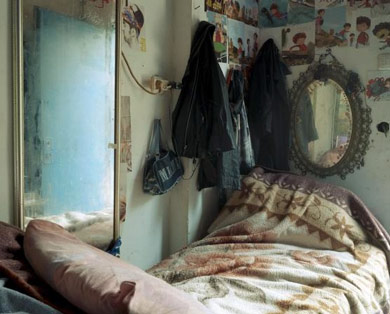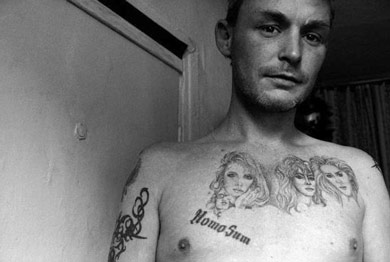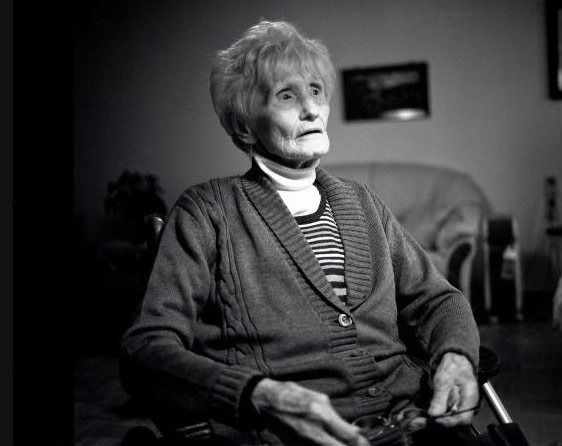
|
|
SPOTLIGHT/Number 123, May 2013
Dear SDN Readers:
This is the first monthly issue of Spotlight where we are recognizing one photographer with the distinction of SDN Featured Photographer of the Month and giving that photographer a $200 cash award. We realize that this will not pay rent in New York, but it is a start to give back to the photography community and recognize their commitment and talent in producing work of such high caliber. We are very honored to give this month's award to Joseph Rodriguez in recognition for his exhibit Migrantes.
Glenn Ruga
SDN Founder and Director
SDN Featured Photographer of the Month
 | |
Photograph by Joseph Rodriguez. Women pray for their families' return home. They are usually left behind to take care of the children as many of their fathers, husbands, and brothers cross the border to go to work in the US. Many of the families do not see the men in their family for years at a time. Nogales, Sonora, MX. 05.97.
|
Migrantes
United States and Mexico
Photographs by Joseph Rodriquez
Migrant workers follow the seasonal trail from their homes in Mexico, across the border into California to pick strawberries, winding through Arkansas to work the tomato crop, then onward to North Carolina to harvest tobacco. These people are constantly moving, migrating through the country, earning their living and providing an invaluable service to American farmers. Most Americans don't notice the dusty Mexicans huddled on street corners. They don't see the Mexicans planting, digging, picking and harvesting. All they are aware of is the fruit they can buy in the market and the cigarettes they can smoke.
View the exhibit.
Biography
Internationally recognized documentary photographer Joseph Rodriguez was born and raised in Brooklyn, New York. He is currently represented by Bill Charles. Joseph's work has appeared in such publications as American Photo, Black&White, ESPN, The New York Times Magazine, National Geographic, Jane, Cosmopolitan, GQ, Los Angeles Magazine, Mother Jones, Newsweek, Esquire, Stern and Der Spiegel. He has received awards and grants from the Open Society Institute, Justice Media Fellowship, Katrina Media Fellowship, National Endowment for the Arts, the Rockefeller Foundation, Mother Jones International Fund for Documentary Photography, Alicia Patterson Fellowship, Fund for Investigative Journalism, Konstnarsnamden Stipendium Swedish Arts Council and New York State Foundation for the Arts. He has been awarded Pictures of the Year by the National Press Photographers Association and the University of Missouri, in 1990, 1992, 1996 and 2002. For more information, visit www.josephrodriguezphotography.com.
|
|
| Other Recently Added Exhibits
|
Join the SDN community!
Upload your documentary exhibits and let thousands of photographers, editors, curators, gallerists, students, and the general public learn about you and your projects.
SDN is now offering $200 each month to the photographer who wins the Featured Photographer of the Month award.
|
|
|
A New Shipbuilding Country on the Global Map
Bangladesh
Photographs by Md.Minhaz Ul Islam Nizami

Photograph by Md.Minhaz Ul Islam Nizami. Shipbuilding Yard, Bangladesh.
Bangladesh, a riverine country with huge coastal areas that are frequently lashed by cyclones and natural disasters, is now booming with a shipbuilding industry. Presently more than 200 shipbuilding and ship repair yards are in Bangladesh and earning millions in foreign revenue. Thousands of people work in these yards. Many Bangladeshi people are also coming back from different countries due to the global recession and getting employment in this new sector in their own country. It's a huge opportunity for Bangladeshis outside the garment industry which is a major employment sector in Bangladesh.
|
 Photograph by Ed Kashi. A masked man stands at the Hudson River waterfront as Hurricane Sandy bears down on New York Harbor, Jersey City, NJ, Oct. 29, 2012. The super storm ravaged the East Coast, leaving many dead and billions of dollars in damage. On assignment for Time magazine to shoot iPhone images for upload in real time to the Time magazine Instagram feed, Ed Kashi covered the incoming storm and some of its devastating aftermath in New Jersey. From images in his hometown of Montclair, NJ, where neighbors lost their home to a fallen tree, to coverage of the destruction wrought by Sandy along the Jersey Shore, Kashi's portfolio represents an intriguing way to cover an emerging news event for a major publication. The implications for the future of visual journalism are a challenge to the ways of the past.
|
Rooms
Israel
Photographs by Lihee Avidan

Photograph by Lihee Avidan. "I started working as a prostitute on the streets. I'm the 'Big Mama' of the bus station area. I've been working here for 28 years. After all this time what kind of CV do I have to start my life again? Today you can't tame me. You could have when I was young, but this is what I know to do"..
In Tel Aviv, there are more than 300 rooms where women work as prostitutes, day and night. Some are shabby places, located downtown, near the old bus station, and some are discrete flats in normal residential buildings, with opaque signs, advertising "Spa" and "Massage Parlour." In Israel alone, there are nearly one million visits to prostitutes per year.
|
 Photograph by Jerzy Wierzbicki. Wojtek, a proud inhabitant of the "Orunia" district. This is a story about the reality in Poland after the fall of communism. Gdansk, the city where Lech Walesa's revolution began, experienced many dramatic changes in the new economic condition of the 1990s. Massive shipyards, where most of the workers use to work during communism, have collapsed and thousand of people lost their regular source of income. This situation has created many problems for this young democracy in Eastern Europe.
|
Haiti: Three Years Later
Photographs by Giles Clarke
 Photograph by Giles Clarke. Charcoal being delivered to a warehouse in Cité Soleil, Port-au-Prince. On January 12, 2010, a massive earthquake hit Haiti, killing over 230,000 people, injuring many more, and leaving 1.5 million homeless. Although for the most part, the media has since moved on, many Haitians are still struggling in scores of tent cities around Port-au-Prince and all along the coast. In Léogâne, a seaside town near the epicenter of the quake, 90 percent of the town's buildings were destroyed and a quarter of its residents died. Many aid organizations such as Médecins sans Frontières had two-year contracts from the Haitian government to provide services to the tent cities, but these contracts have quietly been allowed to expire, leaving thousands of families in dire straits. Many don't like to talk about the earthquake and find solace in the spiritual-either in Christian churches or at voodoo ceremonies. There are now over 12,000 registered NGO organizations in Haiti, which is still the poorest country in the western hemisphere.
|
Abnormality is Normality -
A Portrait of Jews in Germany
 Photograph by Nancy Siesel. Marie Kroll, 90, lives in the house owned by my great-grandfather Meir Siesel. Last year, I considered becoming a naturalized German citizen, and investigated my family's history, in Altenstatd, Germany, a town with a large Jewish population before WWII. My grandmother, a surgical nurse before the rise of Hitler, managed on her own efforts to get a visa to come to the United States, along with my father who was seven at the time, and my grandfather. My grandmother, understanding the dire consequences they were facing, arranged to get the family on the the last ship permitted to dock in New York harbor. My grandmother's brother, his wife, and their daughter were killed in Auschwitz. I have juxtaposed these portraits with sites where the presence of our relatives remain, invisible yet imagined in the air, trees, and soil.
|
SDN Publishes List of 27 Grants and Fellowships Available to Documentary Photographers
See link below for a list of 27 grants and fellowships available to documentary photographers. We welcome additions and corrections to this list, and encourage our members to circulate the list through your social media. We also thank Caterina Clerici for compiling this list!
|
Send Us Your Documentary News
SDN welcomes news about documentary photography. If you have information about exhibitions, publications, calls for entries, and other information relevant to the documentary photography community, we will publish this information on the news section of the SDN home page. To send us your news, click here >>.
|
Flash Forward Festival/ Boston
May 16-19
Fairmont Battery Wharf/Boston While there are many exciting free programs during this four-day festival in Boston, there are a few programs of particular interest to documentary photographers:
Saturday, May 18, 2-3:30 pm
James Estrin, New York Times Lens Blog
Friday, May 17, 4:00 pm
Moderated by Stephen Mayes, Director, VII Photo
|
About SocialDocumentary.net
SocialDocumentary.net is a website for photographers, NGOs, journalists, editors, and students to create and explore documentary exhibits investigating critical issues facing the world today. Recent exhibits have explored oil workers in the Niger River Delta, male sex workers in India, Central American immigrant women during their journey north, and Iraqi and Afghan refugees in Greece.Click here to view all of the exhibits.
|
|
|
|
|
|
|